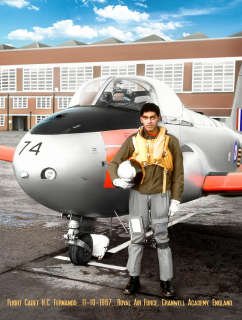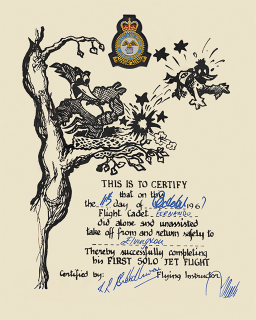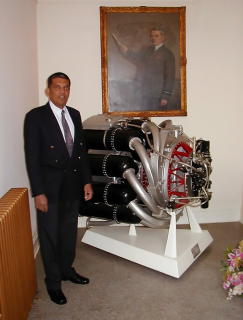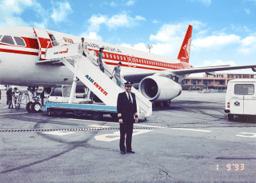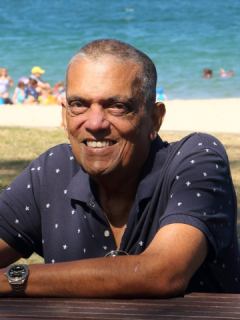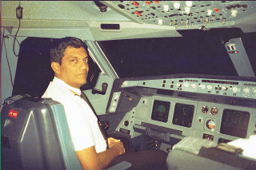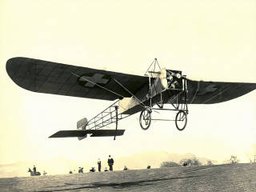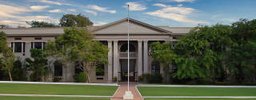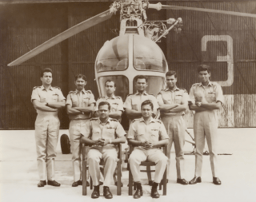Captain Chira Fernando
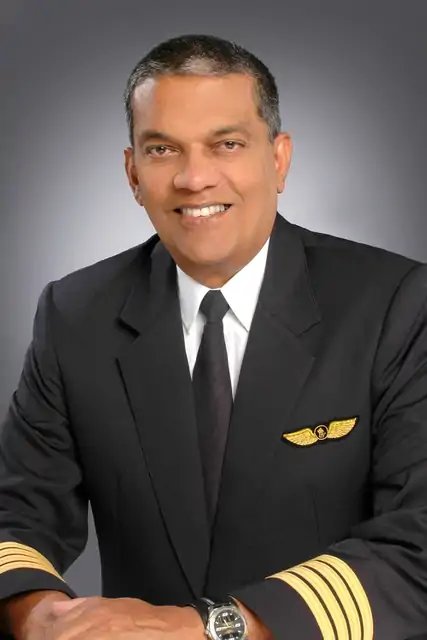
Captain Chira Fernando
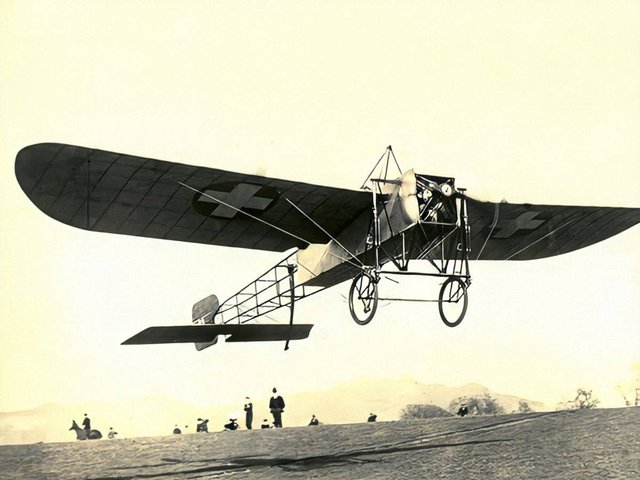
12/09/1911 – Ceylon gets its very first aircraft, the Bleriot, which arrived by ship.
Hemendra Chirananda Fernando, (born 22 October 1946) and known professionally as Capt. Chira Fernando, is a highly accomplished and well-respected Aviator in Sri Lanka. He was a qualified Flight Instructor of the Sri Lanka Air Force from 1970 to 1980 and has remained a dedicated civil aviation Flight Instructor since he first began as an instructor in 1970, and is still active in that role, as of April 2021.
Having flown over 50 different types of aircraft throughout his long career (Military, Civil and Recreational), Chira has devoted over 53 years of his life to the aviation industries of Sri Lanka and Singapore, and as a consultant in Australia.
As of April 2021, when this Wiki page was first published, Chira was still the longest-serving aviator in the history of Sri Lankan aviation – which began in September 1911, with the arrival of the very first aircraft in Sri Lanka (then Ceylon) – the Bleriot.
Early Life and Education
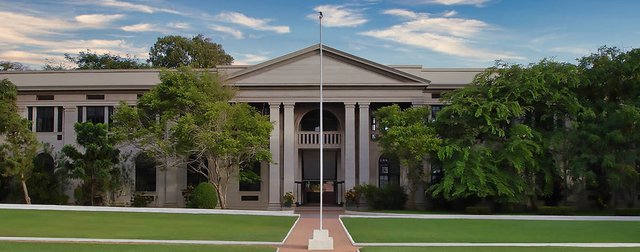
S. Thomas' College, Mount Lavinia
Chira Fernando was born to Anglican parents and grew up in 5th Lane Colombo 3.
His father Hector Francis Campbell (1911-1962) was the first qualified Ceylonese Ophthalmic Optician of Sri Lanka.
His mother, Merlyn Anne Catherine (1910–2003), belonged to the Calistorite family who is a direct descendant of the famed Veera Puran Appu of Sri Lanka.
Chira is the fourth in the family of five siblings.
Chira was educated at the prestigious S. Thomas' College, Mount Lavinia, where he was taught Sinhalese by the famed Arisen Ahubudu and Prof. Vini Vitarana. On leaving college, he got admission as an Engineering student to the University of Colombo but dropped out after three months when he joined the Royal Ceylon Air Force (RCyAF) in 1965.
Royal Ceylon Air Force (RCyAF)
After graduating from Cranwell, Chira was commissioned to the RCyAF as a Pilot Officer and posted to the #4 Helicopter Flight under #2 Squadron of the RCyAF.
Here he studied about piston engines prior to training on the Westland S51 Dragonfly under Flt.
Lt. Milroy Zoysa.
One day during start-up, while engaging the rotors, the tail-rotor drive shaft of the S51 failed due to metal fatigue, thus grounding the machine permanently.
Chira continued training a few months later on the newly arrived Bell 206 Jet Ranger.
On 3rd September 1970, Chira was certified as a Qualified Flight Instructor at the No:1 Flight Training School in China Bay to conduct training on the Chipmunk T10, making him the youngest RCyAF Flight Instructor at the time, at the age of 24.
He was also rated on the de Havilland Heron at this time.
RAF Cranwell College

Proud completion of 1st solo flight, in a Jet Provost Mk4, RAF Cranwell College, London, England. 1967.
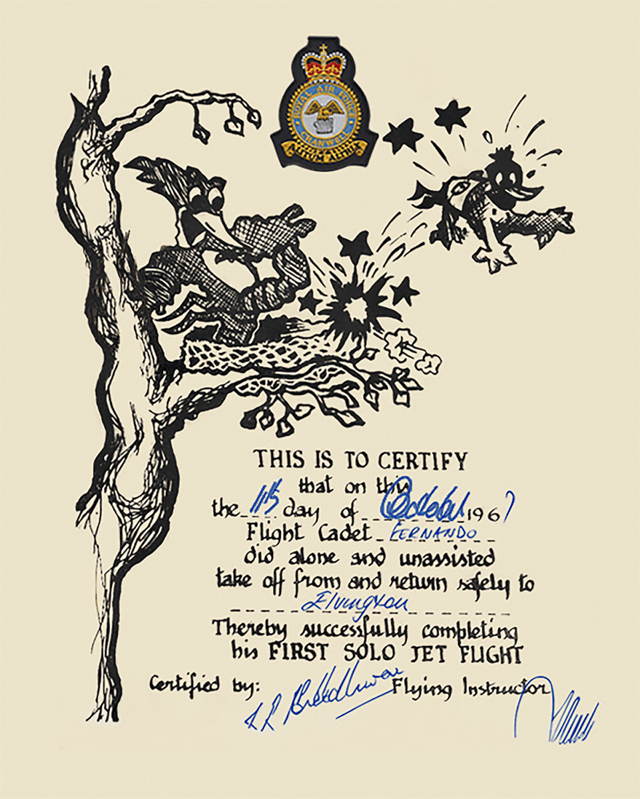
First Solo Flight Certificate from RAF, Cranwell College, London, England. 1967.
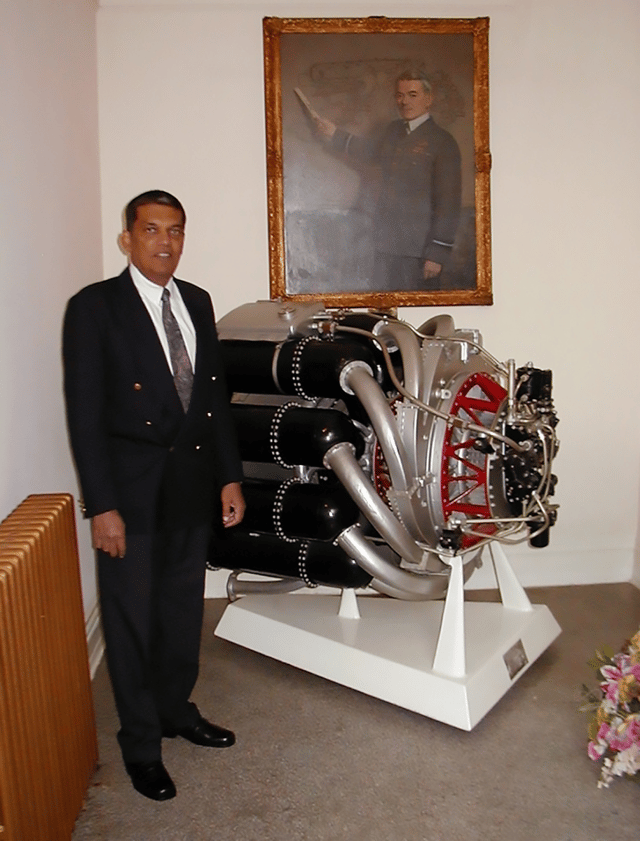
At Whittle Hall, RAF Cranwell Base. The engine is from the Gloucester Goblin, which powered the first ever Jet aircraft flown by the RAF, taking off from the RAF Cranwell Air Base.
In 1965, Chira joined the RCyAF as an Officer Cadet, where he was required to study as an Engineering Cadet for two and a half years and serve as a Commissioned Officer for a further two and a half years.
After his basic training of drills, battle courses and night marches at the RCyAF Training School in Diyatalawa Chira embarked on his journey to England in February 1966, onboard the Castel Felice and docked at Southampton after 14 days of sailing. In September 1968, during a two week ‘King Rock’ Escape and Evasion training in Gütersloh Germany.[5] Chira fell into a ditch and twisted his left knee. Assuming that he was trying to get off the exercise, the German doctor who treated him just strapped his knee and patted him off. However, the continuation of the exercise aggravated the knee so badly putting Chira out of action and into the RAF hospital in Gütersloh.
An X-ray discovered a torn ligament and calcification of his knee joint. After some arthroscopic cleaning and knee cap replacement, Chira spent his springtime convalescing at RAF Headley Court (currently the Defence Medical Rehabilitation Centre Headley Court). By now Chira had missed six weeks of academic training and his Flight Commander Flt. Lt. John Merry informed him that he would have to be re-coursed with the next batch; Or, that he could opt to change to the General Duties (Pilot) Branch. Eventually, the RCyAF approved the Branch change and his ‘no objection’ papers to join the Flying wing, were signed by Air Commodore Padman Paddy Mendis and delivered to the RAF via Major Denis Perera, the Military Liaison Officer (MLO) of the Embassy of Ceylon in London (now Sri Lanka High Commission).
His Squadron Commander, Sqd Ldr. David Harcourt-Smith organized his aptitude test at RAF Biggin Hill. He passed the test and left Headley Court as a Flight Cadet of the 94th entry of the RAF College. He trained on the Jet Provost Mk4 and on 2nd August 1968, was awarded the ‘Wings of the Royal Air Force’. Chira was the last Ceylonese flight cadet to graduate from the RAF Cranwell.
JVP Uprising
Early morning on 4th April 1971, Chira was on an overseas RCyAF navigation training flight to Gan Island.
While relaxing in Gan that afternoon, the RCyAF crew received information via RAF Gan that they have been summoned back to Ceylon immediately.
RAF Gan informed them further that several police stations in Ceylon had been attacked by a Marxist Youth Rebellion by the name of Janatha Vimukthi Peramuna (JVP).
On arrival on 5th April 1971, Chira reported directly to #4 Flight at RCyAF Katunayake and then to RCyAF Headquarters Colombo. His first task following the outbreak of the JVP insurrection, was on 6th April 1971, to transport injured policemen from Kegalle to Katunayake in the Jet Ranger. Despite the rotting corpses and delusional youth with mangled limbs, the entire JVP insurrection was considered rather primitive and disorganized. Their home-made weapons were crude and ineffectual. Chira flew the Jet Rangers mainly on Recce flights and several offensive flights in Elpitiya, Anuradhapura, Pothuhera and Kegalle. After his 44th operational flight on 23rd April 1971, he transferred to the armed Bell H-13 Sioux (the UK donated a militarized version of the Bell 47G) which were assembled overnight and air tested by the Indian Air Force and Flying Officer Mahes Gunatilleke. 5 sessions later, (including gunnery practice on a beached ship off Negombo), on 24th April, Chira was operational on the OH-13H attached to the area commander Kegalle District, Colonel Cyril Ranatunga (later General).
The gritty realism of the senseless uprising had a profound effect on Chira when the Air Force lost one of its Jet Provost pilots, Sgt. Pilot Ranjit Wijetunga.
Wijetunge failed to eject when he lost power in the JP and crashed over Thampalagamam Bay on the south-westerly approach to the China Bay runway.[8] Chira pulled Wijetunga off the ejection seat and airlifted him within minutes to China Bay but Wijetunga succumbed to his fatal injuries.
Following the end of the JVP conflict, Chira returned to China Bay and continued as Flight Instructor.
On 10th December 1971, he got rated on the de Havilland Dove Mk5.
Sri Lanka Air Force
With Ceylon becoming a republic in 1972, the Royal Ceylon Air Force changed its name to the Sri Lanka Air Force along with all insignia. In 1972, Six Cessna 150 aircraft and four Cessna 337 Skymaster aircraft were gifted to Sri Lanka by the US Government. The C150s replaced the Chipmunks as the training aircraft. Chira added these ratings to his collection and continued training and taking part in ad-hoc formation flights and other mundane activities of a peace-time air force at China Bay.
In February 1974, Chira converted to the MiG15 and MiG17 and was posted as the Commanding Officer of the #6 MiG Squadron at Katunayake making him the youngest CO of a squadron at the time. The fuel allocation for the Squadron was very small, hence, the pilots flew the MiGs only for about 5 hours a month. Despite this, Chira formed an aerobatic team with fellow MiG pilots Nihal Tudugalle, Cecil Marambe, Shan Wadivel and Fahir Wahab and went on to perform aerobatics, mostly as a skill-building exercise.[9] In 1975, during a low flying intensity period, Chira completed his UK Airline Transport Pilots License (ATPL) exam and was encouraged by his Commander AVM Paddy Mendis to complete his civil flight test on the civilian registered Convair 440. He was thereafter seconded to fly the Air Maldives Convair 440 where he flew as commander for two seasons from 1975-1977. During this period, he had 16 engine failures on this aircraft.
In May 1976, Chira was converted on the SIAI-Marchetti SF 260, and in June the same year, on the Douglas DC-3 and in August 1977 on the Riley Heron which is the conversion of the de Havilland Heron. In October 1977 he was appointed to take over the civilian airport in Palali Jaffna (Now Jaffna International airport) and convert it to an Air Force base. in March 1978 Chira was promoted to the rank of Squadron Leader and appointed Deputy Commandant of the SLAF Academy at China Bay and later as the Fixed Wing Standards Officer and command Instrument Rating Examiner at Katunayake. During this time Chira flew the Pazmany PL-1 (built by the SLAF based on the aircraft plans) and carried out performance checks with the engineer in charge of the build, Jim Gunaratnam.[10] When he left the service in June 1981, Chira had qualified on 20 different aircraft types of the Sri Lanka Air Force.
Civil Aviation
By the end of 1981, Chira’s direction on aviation changed completely.
He began to focus mainly on Civil Aviation and Flight Training.
He launched the first private (civil) flying training facility together with his Sri Lanka Air Force colleague Sqd.Ldr.(Rtd)
Osmund Pau. The
school which was registered as ‘Air Taxi Ltd’ was a subsidiary of the Capital Maharaja Organization[11] of Sri Lanka and based at the domestic airfield, Ratmalana Airport of Columbo. “Air Taxi Ltd’ was approved by the Civil Aviation Authority of Sri Lanka (CAASL).[12] At Air Taxis he began training pilots on the Cessna 206, Cessna 177, Cessna 152 and the Piper PA-38. During this time he also got rated on the Lake Buccaneer LA-4-200 and operated flights for Consolidated Marine Engineering Ltd,[13] Kew Road, Colombo 2.
Airlines
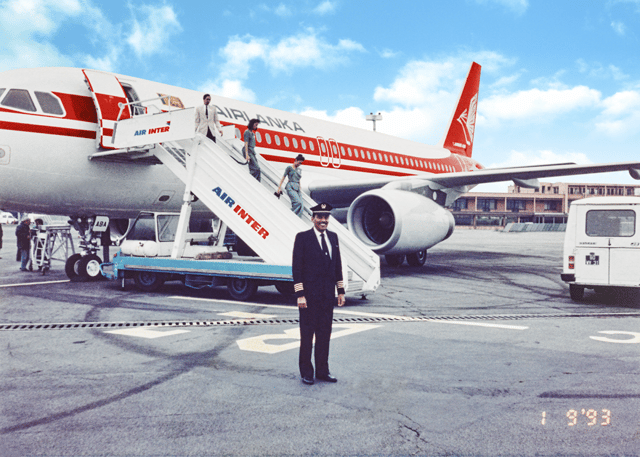
Historic delivery of the first Air Lanka Airbus A320, Katunayake, Sri Lanka 1993.
In June 1982, Chira joined Air Lanka (now Sri Lankan Air Lines)[14] as a First Officer and went on to train on the Air Canada Lockheed L-1011 TriStar, in Toronto, Canada. He was promoted as L1011[15] Captain in October 1987, as an L1011 Line Training captain in August 1989 and an L1011 Synthetic Flight Instructor in April 1990. Chira continued flying training at the domestic airfield on his off-days and continued as an Examiner and Consultant to the Civil Aviation Authority in Sri Lanka. He also bought a Piper PA-28 from the Dubai Flying Club and ferried it with his pilot wife to Sri Lanka via Oman, Pakistan and Indian in December 1987.[16] In October 1991, he ferried a Beechcraft Baron 55 from Lisbon via Athens, Luxor, Bahrain, Mumbai to Sri Lanka with David Pieris of Richard Pieris and Co Sri Lanka.
In 1991 Chira was appointed the Manager Flight Operations at Air Lanka.
In December 1992, the Airbus A320[17] aircraft was successfully introduced into the airline and in August 1994 Air Lanka became the launch customer for the Airbus A340 in South Asia and the Far East.[18] Chira ferried both the first A320 and the first A340 from Toulouse France to Sri Lanka. Chira and his Co-pilot Ravi Thampapillai became the first pilots to fly the A340 in the South Asian and Far East region. During his tenure as MFO, Chira also introduced women pilots to the airline. In April 1997 Chira joined Gulf Air[19] on the A340 and was based with Philippine Airlines for periods of times, on a wet-lease agreement. In 1998 Chira joined Singapore Airlines as a Commander on the A340 and subsequently on the Boeing 777 as a line Instructor. During this time, he obtained his Master of Technology from Swinburne University[20] Australia. He also participated in the Operation Safety Interest Group of SIA and remained with the airline until his retirement in October 2006.
Chira promptly formed friendships with Industry notables as well as aspiring pilots in the region, during his three years as an A320 Instructor at Boeing-Alteon Singapore.[21] This got him headhunted to ST Aerospace Aviation in Singapore as their Head of Training in April 2009. In his 10 year tenure at STAA, Chira won acclaim for his pioneering work as a team player, to spearhead the development of the Multi-Crew Pilot Licence in Singapore in partnership with Peh Teng Keng of ST Aerospace Aviation, Tiger Airways (now merged with Scoot) Dieter Harms of Harms Aviation[22] and the Civil Aviation Authority of Singapore.
Personal Life
On July 30th 1971, he married Violet Maurine de Silva and has two sons and a daughter from this marriage.
Children
Kamal Chirananda Mututantri
Anouk Mututantri
Chira Fernando
Their divorce was ratified in 1989.
On March 7th 1990, he married Menaka Ashi, an aviatrix.
The Aviator
Chira has his signature in a diverse range of aeronautical fields.
He was a Military pilot flying Fighters, Helicopters and performing Aerobatics.
He has been in General Aviation since 1981 as a Flight Instructor and Examiner and in the Airlines involved in Airline Operations management.
He is currently involved in type rating training and MPL training.
He is also a sports aviation enthusiast flying a MaxAir drifter[23] and a Powrachute when he is not flying Remote Control Models.
Aircraft Flown
| Date | Aircraft | Date | Aircraft | ||
|---|---|---|---|---|---|
| 1 | 22/10/1966 | SEDBERGH T24 | 26 | 11/12/1981 | LAKE LA4-200 BUCCANEER |
| 2 | 25/09/1967 | JET PROVOST MK3 | 27 | 17/02/1982 | PIPER PA38 TOMOHAWK |
| 3 | 27/09/1967 | JET PROVOST MK4 | 28 | 21/10/1982 | TRISTAR L1011-500 |
| 4 | 01/09/1968 | PRESTWICK PIONEER | 29 | 15/01/1985 | CESSNA 177B CARDINAL |
| 5 | 07/09/1968 | DE HAVILLAND DOVE MK 5 | 30 | 15/09/1985 | CESSNA 172 SKYHAWK |
| 6 | 06/01/1969 | WESTLAND DRAGONFLY S-51 | 31 | 23/09/1985 | BEECH 200T |
| 7 | 06/01/1969 | DE HAVILLAND HERON | 32 | 26/12/1985 | MAXAIR DRIFTER |
| 8 | 04/06/1969 | BELL206 JET RANGER | 33 | 09/04/1986 | PIPER PA28 CHEROKEE |
| 9 | 05/10/1969 | CHIPMUNK | 34 | 24/01/1987 | SPITFIRE U2 ULTRALIGHT |
| 10 | 06/11/1969 | AUSTER AUTOCRAT J/1 | 35 | 28/01/1987 | EIPPER QUICKSILVER |
| 11 | 23/04/1971 | BELL OH-13H/BELL 47G | 36 | 27/08/1989 | HARBIN Y12 |
| 12 | 09/12/1972 | CESSNA 150 | 37 | 13/09/1990 | CHAMPION SUPER DECATHLON |
| 13 | 25/06/1973 | CESSNA 337 SKYMASTER | 38 | 25/10/1991 | BEECHCRAFT 55 BARON |
| 14 | 18/02/1974 | MiG 15 | 39 | 10/12/1992 | AIRBUS A320 |
| 15 | 27/02/1974 | MiG 17 | 40 | 26/12/1992 | PIPER PA23 APACHE |
| 16 | 21/05/1975 | CONVAIR 440 | 41 | 04/08/1994 | AIRBUS A340 |
| 17 | 01/05/1976 | SIAI-MARCHETTI SF260 | 42 | 23/11/2001 | BOEING B777 |
| 18 | 09/06/1976 | DOUGLAS DC3 DAKOTA | 43 | 02/12/2002 | PIPER ARROW |
| 19 | 26/08/1977 | DE HAVILLAND RILEY HERON | 44 | 06/04/2003 | SEAHAWK [HOMEBUILT] |
| 20 | 15/01/1980 | DAUPHIN AS365C | 45 | 18/09/2004 | BEECH SUNDOWNER |
| 21 | 22/01/1980 | PAZMANY PL2 [HOME BUILT] | 46 | 02/05/2008 | CESSNA 310 |
| 22 | 02/02/1980 | AVRO HS 748 | 47 | 21/02/2009 | BEECH 1900D |
| 23 | 10/06/1981 | CESSNA 421C GOLDEN EAGLE | 48 | 29/05/2009 | PIPER PA34 SENECA |
| 24 | 22/06/1981 | CESSNA 206 | 49 | 26/11/2009 | JABIRU |
| 25 | 01/11/1981 | CESSNA 152 | 50 | 12/01/2012 | TECNAM 2006T |
Various Ultralight Aircraft – Date flown Not Recorded
| Aircraft | Aircraft | ||
|---|---|---|---|
| 1 | PEGASUS PARAMOTOR | 6 | PAZMANY PL2 [HOME BUILT] |
| 2 | AUTOGYRO MT0 | 7 | PEGASUS PARAMOTOR |
| 3 | AEROSHUTE PARAMOTOR | 8 | PRESTWICK PIONEER |
| 4 | EIPPER QUICKSILVER | 9 | SEAHAWK [HOMEBUILT] |
| 5 | MAXAIR DRIFTER | 10 | SPITFIRE U2 ULTRALIGHT |
